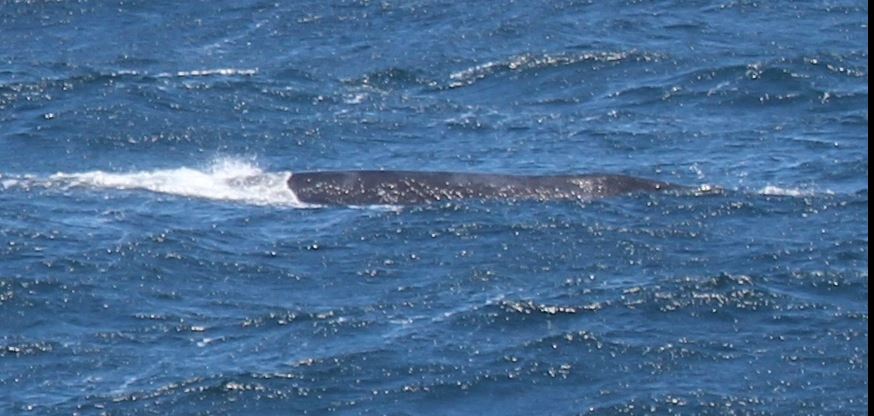In an extraordinary sighting, a critically endangered right whale was spotted off the Marin County coast on Friday, thrilling scientists.
One of the rarest whales in the world, fewer than 40 animals are thought to survive.
“It was astonishing,” said research ecologist Jan Roletto, who sighted the whale about three miles west of Point Reyes National Seashore while aboard a research vessel for the Applied California Current Ecosystem Studies.
Friday’s weather was rough, with fierce winds that pushed 12 to 14-foot swells. The mission of the research team’s weeklong trip was to survey wildlife in a partnership between Greater Farallones and Cordell Bank National Marine Sanctuaries and Point Blue Conservation Science.
But the whale was unmistakable.
“It came up right in front of us,” then lingered for nearly 20 minutes, said Roletto, research coordinator for the Greater Farallones and Cordell Bank National Marine Sanctuaries.
Standing together on the ship’s viewing platform, Roletto and marine ecologist Kirsten Lindquist instantly turned to look at each other.
“We both knew immediately what it was,” Roletto said. The identification has since been officially confirmed by the NOAA Marine Mammal Lab in Seattle, based on photos and video.
The whale had a distinctive V-shaped blow. Wide and pitch black, it had no dorsal fin. And there was at least one cluster of telltale “callosities” on the head, rough and white skin patches.
“It seemed to be resting,” Roletto said. “It wasn’t feeding. It wasn’t traveling. It would move a little bit, then sink down.”
Like other whales, the species was driven nearly to extinction by commercial whaling. But unlike other whales — such as humpbacks, grey whales and blue whales — it has been much slower to recover. Populations of right whales are larger in the Atlantic Ocean, as well as in the Southern Hemisphere.
North Pacific right whales were favored by hunters because they swim slowly near shore, and float after death. By the late 1800s, as many as 40,000 North Pacific right whales had been slaughtered.
The International Convention for the Regulation of Whaling banned the commercial hunting of right whales in the North Pacific in 1937, and their numbers began to climb.
However, illegal Soviet whaling in the 1960s in the northern Gulf of Alaska and Bering Sea again pushed the species toward extinction.
They have been protected under the Endangered Species Act since 1970. While whaling is no longer a threat, human activity such as entanglement in fishing gear and marine debris, vessel strikes, impacts from climate change, oil and gas development and ocean noise continue to threaten the species.
North Pacific right whales are baleen whales, which feed by straining huge volumes of ocean water through their comb-like baleen plates that trap copepods and other zooplankton.
Because they are so rare, very little is known about the movements, migration, breeding or calving of the North Pacific species, said Jim Scarff, an independent whale researcher in Berkeley. Tagging is difficult and unsuccessful, he added.
“There is remarkably little understanding about their distribution,” he said.
Surveys conducted by the National Marine Fisheries Service have detected small numbers of North Pacific right whales in the Gulf of Alaska in a small area called the Barnabas Trough, according to the U.S. Marine Mammal Commission. Twelve were detected in the southeastern Bering Sea.
In the past decade, there have been a handful of detections off the coast of British Columbia or Washington State.
In March 2023, hale watchers sighted one close to shore near Pt. Pinos in Monterey Bay. In April 2022, a fisherman reported a sighting near San Mateo County’s Point Ano Nuevo.
“It’s always one individual animal, often in the spring,” said Scarff. “And then it’s never seen again.”












